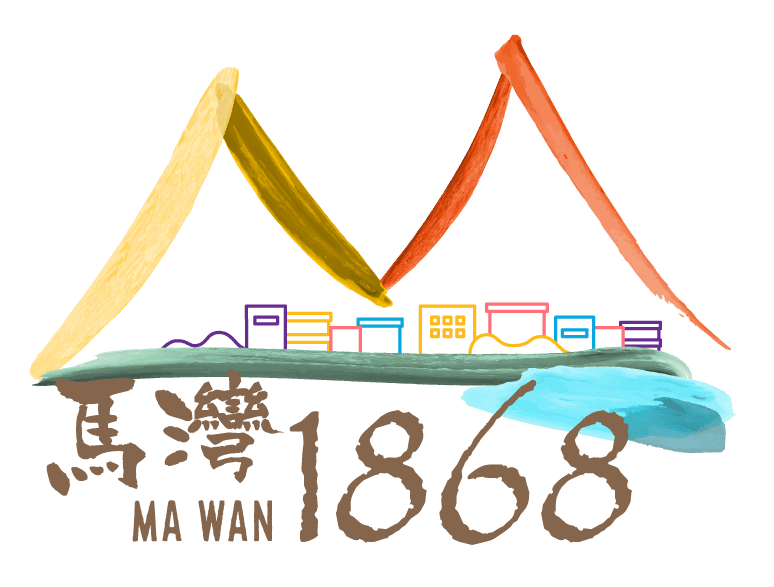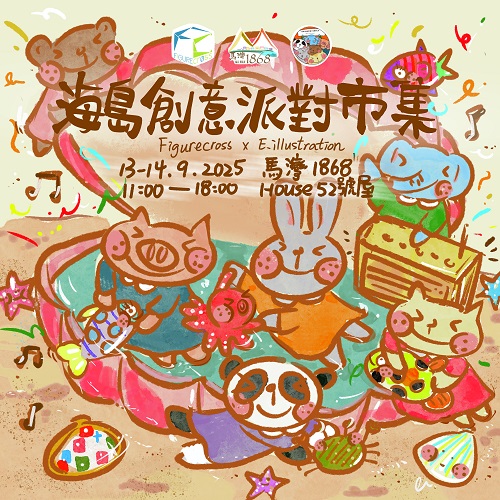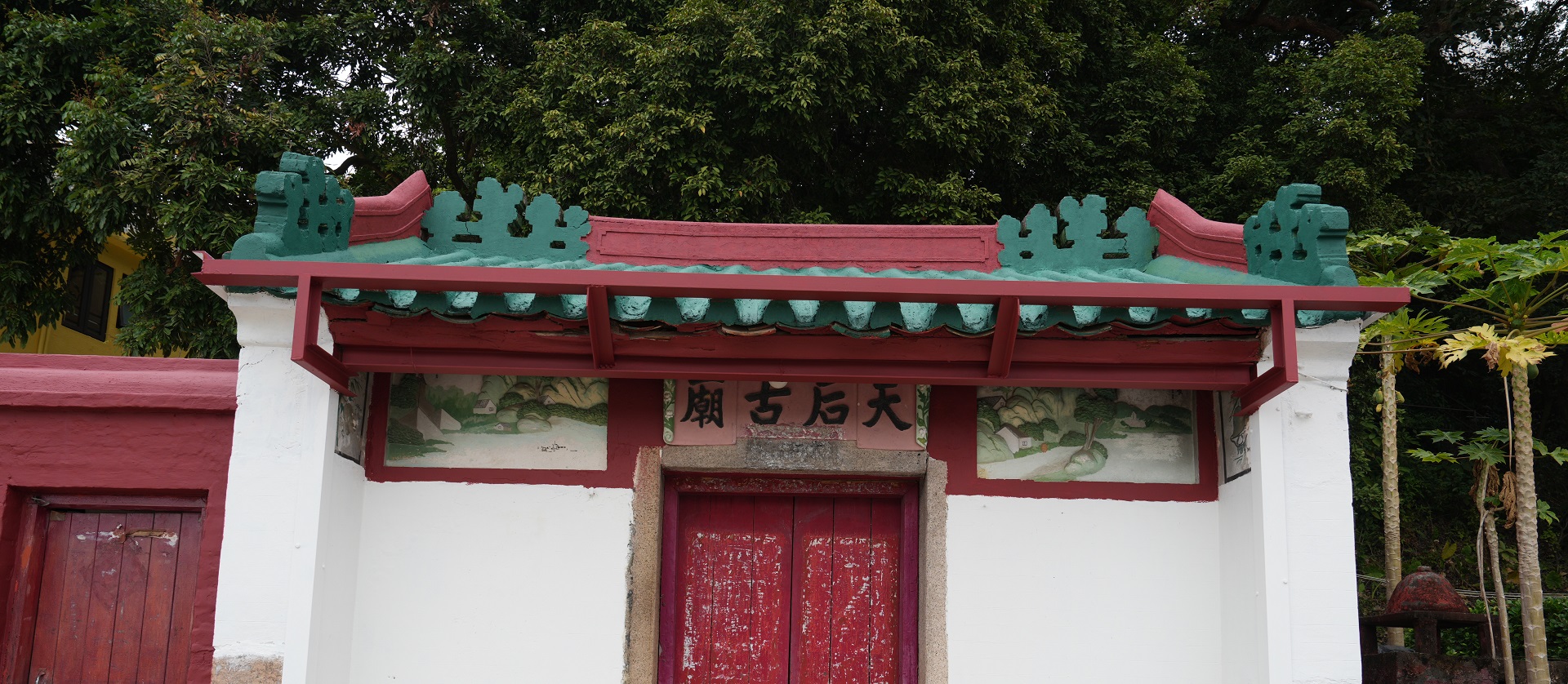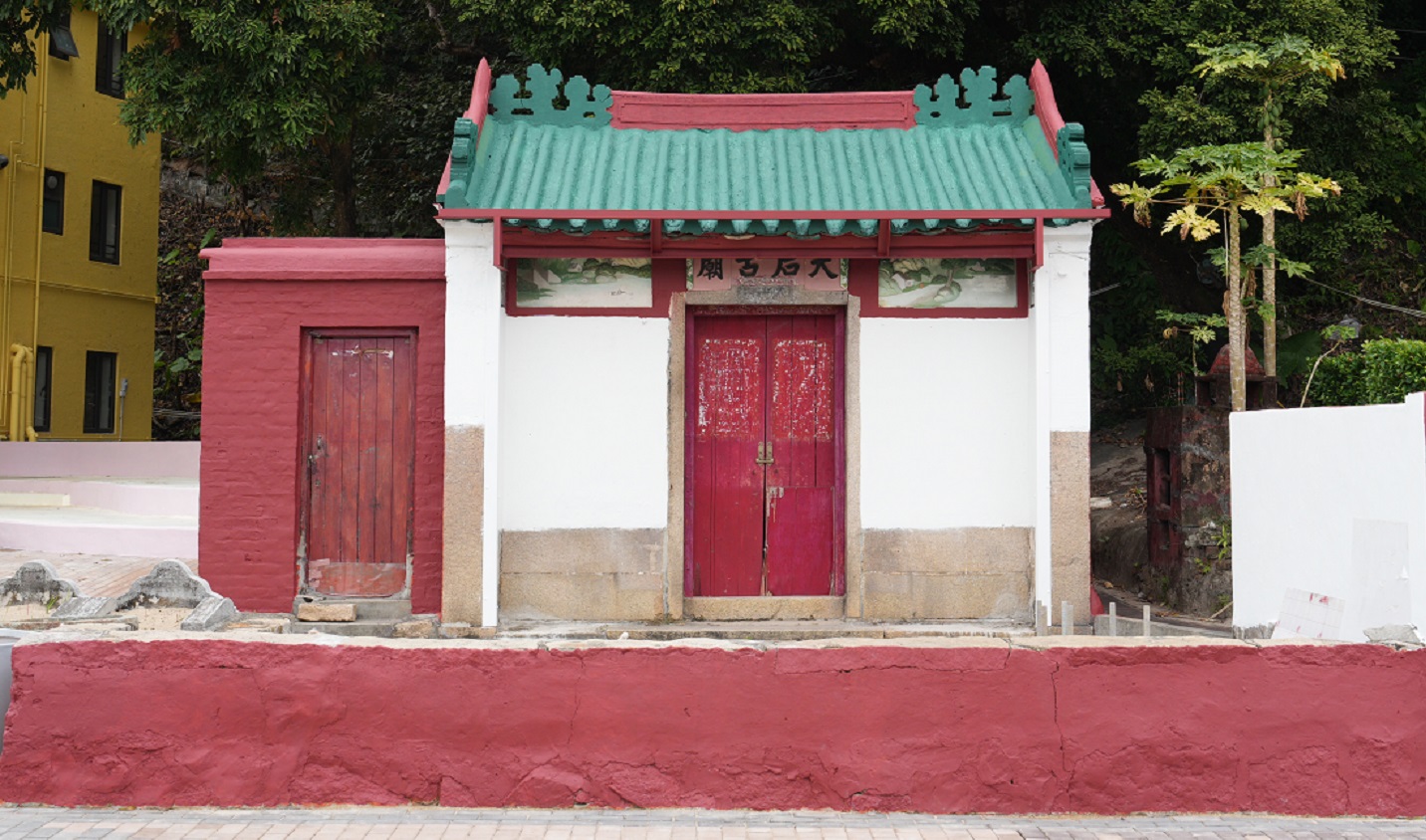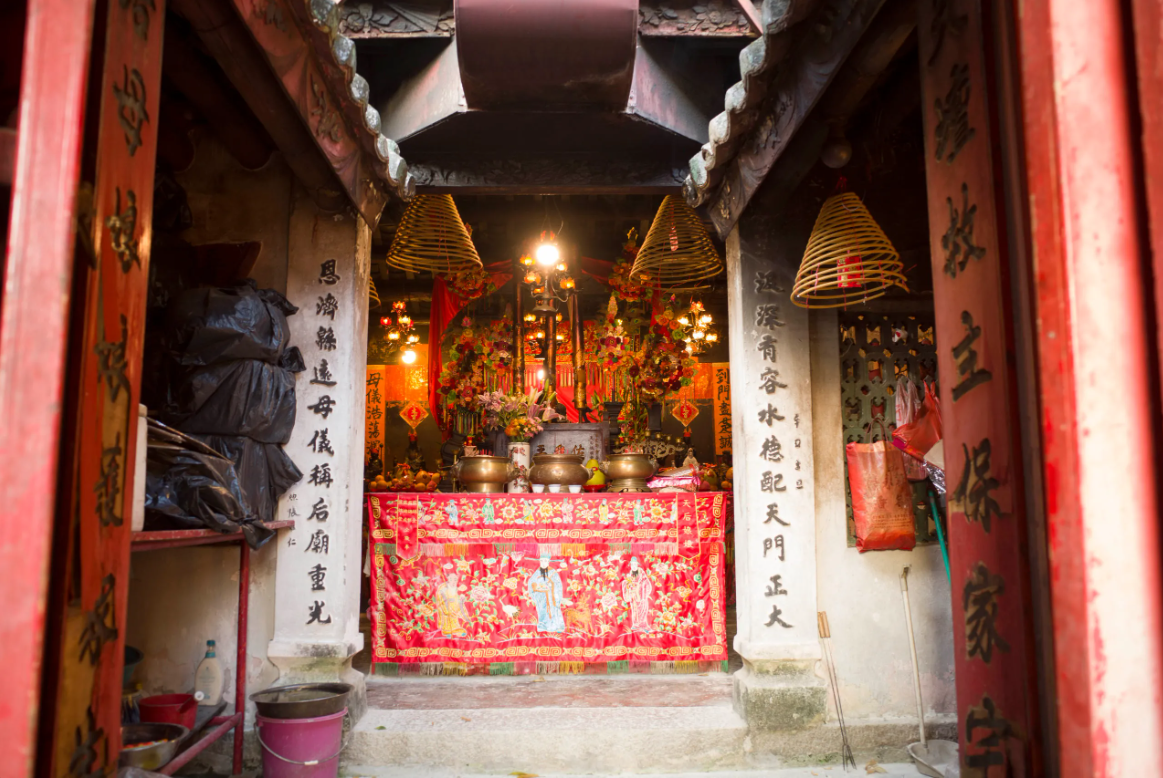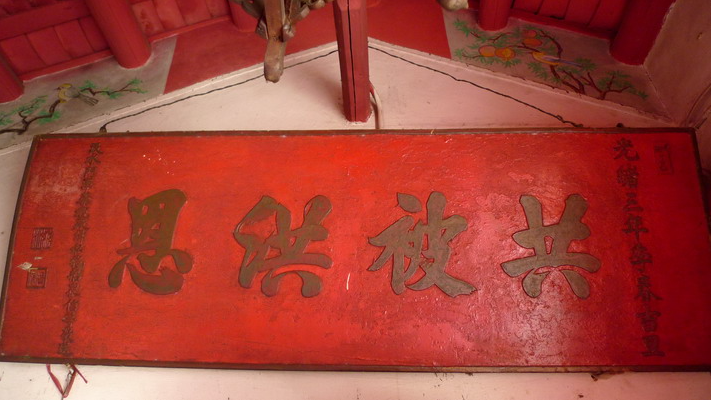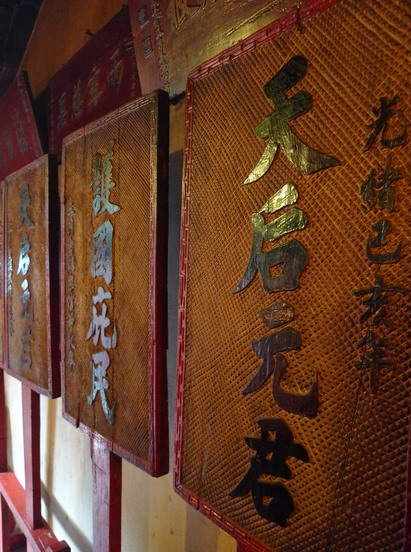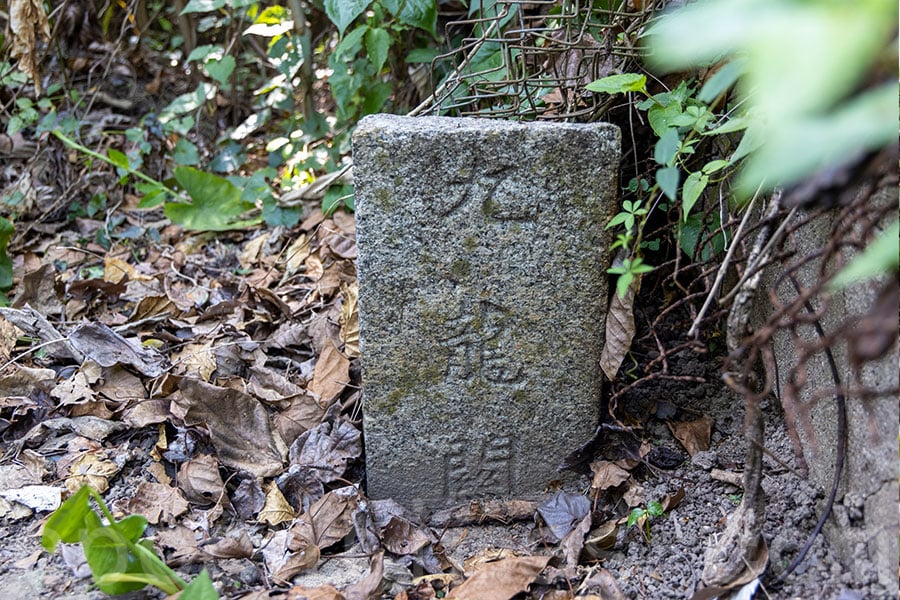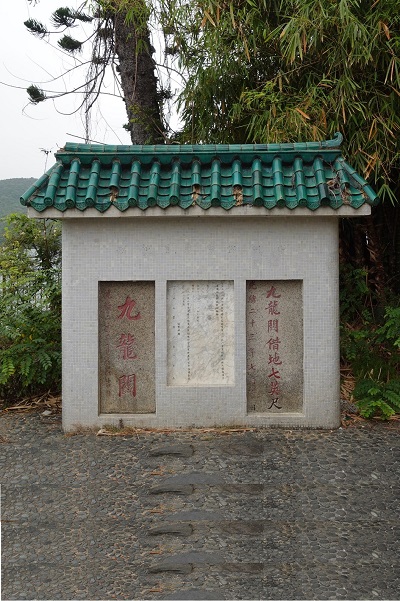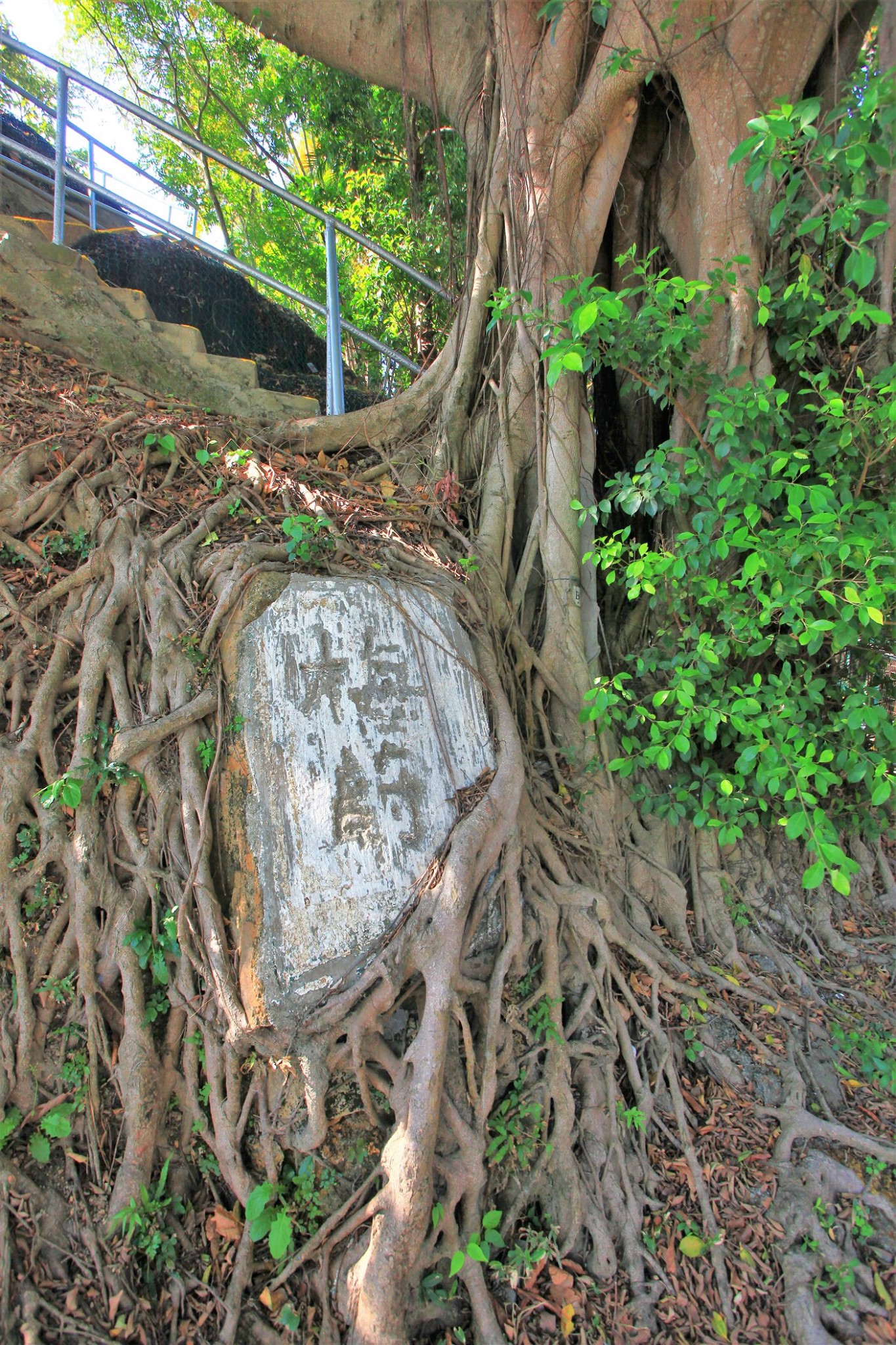Ma Wan Tin Hau Temple
Built in the seventh year of the Xianfeng reign (1857), the Ma Wan Tin Hau Temple was constructed by Tanka fishermen to honor the goddess Tin Hau. It is the oldest temple on the island. There is also a legend that suggests the temple was originally a lookout post for the South China pirate Cheung Po Tsai, although no relevant documents, architectural features, or relics have been found to support this claim.
According to records from the Antiquities and Monuments Office, the temple underwent multiple renovations (in 1860, 1881, 1961, and 1970) and was designated as a Grade III historic building in January 2010, reflecting its profound cultural heritage.
The temple features a two-hall layout with walls made of tamped earth and a roof adorned with green glazed tiles. The intricate “aoyu” (dragon fish) decorations on the roof ridges add a unique charm. In its early days, the temple’s ornamental archway symbolized reverence for the gods and became a major landmark for worshippers. Inside, the central courtyard houses a statue of Tin Hau, flanked by statues of her guardian deities, Thousand Mile Eye and Favourable Wind Ear, expressing deep respect for the divine. The interior is also decorated with red and black wooden plaques, which embody the gratitude and admiration of the worshippers while showcasing the community’s spiritual faith and unity.
The temple’s history also reflects Ma Wan’s role as a tax station aimed at combating opium smuggling. Notably, it once held three incense burners from 1886, as well as plaques gifted by the Chinese Customs in 1878 and 1888, which are important symbols of this period.
Each year on the 23rd day of the third lunar month, the Ma Wan Rural Committee organizes a grand celebration of Tin Hau’s birthday in the open space in front of the temple. Festivities include Chinese opera, lion dances, and Tin Hau’s ceremonial parade, attracting worshippers and tourists to experience the cultural heritage. Following the relocation of the new Tin Hau Temple to the hillside near Shek Tsai Wan, behind Fong Yuen Study Hall, the celebrations were moved to the new temple. Nevertheless, these events continue to strengthen community bonds and preserve the history and culture of the temple.
